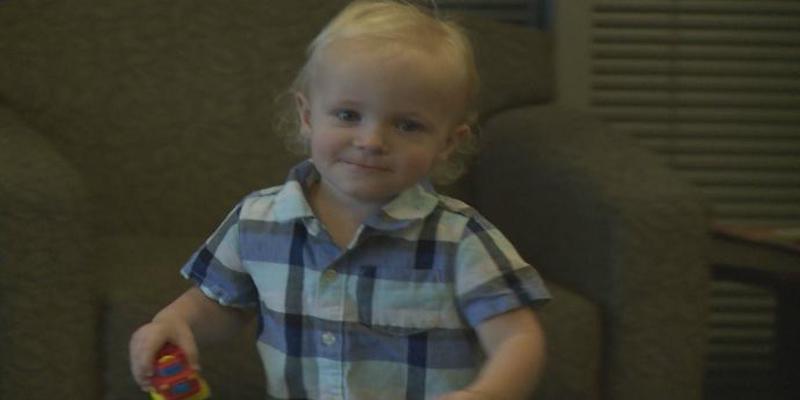A two-year-old boy is celebrating life along with his family after he received a crucial blood transfusion to keep him alive.
All thanks to blood donation, Joel Bicknell came into the world as the youngest of six other children. His Mom says it was normal to see Joel being swaddled up by other family members.
“He was always kind of babied by the others always someone wanting to carry him around and love on him,” says Joel’s mother, Chandra Bicknell.
Around the time of his first birthday, Chandra began to notice his energy depleting and napping becoming more and more of a common occurrence. His parents also noticed that Joel was still underweight more than a normal 1-year-old boy should be.
Joel’s parents took him to see a doctor who continued to do tests on their son. The doctor returned with the prognosis that determined his iron levels were low. Doctors weren’t sure what was happening but wanted his parents to prepare for the worst.
“They told us it could be leukemia or a couple of different rare anemia disorders,” says Chandra.Joel was eventually diagnosed with Transient Erythroblastopenia of Early Childhood (TEC). His body had stopped making red blood cells and slowed down bone marrow development.
He had to have numerous amounts of blood transfusions to build his supply back up and slowly but surely Joel returned to his energetic state.
Chandra says that although the situation was one she never wants to go through again, she now uses Joel’s story to share and encourage others to donate blood and hopefully save more lives like Joel’s.
“I’m excited to be an advocate now,” says Chandra. “I feel like that’s kind of what I consider my self-being now is an advocate for the blood center.”
Joel’s story is just one of the thousands of stories that had a positive outcome because of donors.
Blood transfusions are usually done in a hospital, an outpatient clinic or a doctor’s office. A blood transfusion typically takes one to four hours, depending on which parts of the blood you receive and how much blood you need. You’re usually seated or lying down for the procedure.To keep blood safe, blood banks carefully screen donated blood. The risk of catching a virus from a blood transfusion is very low. HIV. … There is a possible risk of getting vCJD from a blood transfusion, although the risk is very low.
Blood transfusions also are done during surgery and in emergency rooms. A needle is used to insert an intravenous (IV) line into one of your blood vessels. Through this line, you receive healthy blood. The procedure usually takes 1 to 4 hours.
- A severe infection or liver disease that stops your body from properly making blood or some parts of blood.
- An illness that causes anemia, such as kidney disease or cancer. …
- A bleeding disorder, such as hemophilia or thrombocytopenia (THROM-bo-si-to-PE-ne-ah).
It does not hurt to have a blood transfusion. The only pain you may feel is when the needle is inserted into your vein. This pain is brief. If you have a central venous catheter, the red blood cells or platelets may be given through it.
